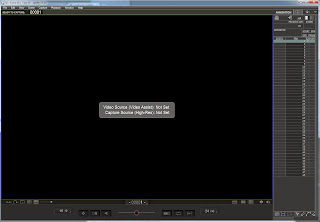The Messy Series of animation experiments was an important undertaking while I started working on the development of my Senior Grad Project this year. I'm going to take this opportunity to reflect on the progress that was made and look forward to what the next round of experiments will bring.
I really felt that the Messy Series was successful. I developed the very specific goal to animate with oil pastels as I formulated the scope of the projects. I've always been drawn to the way that oil pastels can be used to capture light and form in static drawings and I wanted to bring that quality to my time-based work.
Throughout the Messy Series I tried my best to explore openly with the mediums while also making conscious decisions to eliminate variables in order to create a focus in the work. For instance, when I developed the method of back lighting the work, while using orange paper and beige felt to simultaneously warm the light and dull the piece, I knew that I had created a lighting style that was satisfactory. From that point forward I decided to leave that lighting process untouched and focus on the how the oil pastels responded to the acetate and glass.
Having difficulty applying the oil pastel to the glass was by far the biggest surprise in the process. I was so certain that by spending the time to prepare a glass surface for animation I would be furthering my progress with the oil pastels. I was dumbfounded when all my planning and preparation didn't work. Sometimes you learn the most about your work when you least expect to.
If I were to continue the Messy Series at this point I would definitely start to work with particular character styles and a different array of movements. My goals would be threefold: how to best represent the human figure with this technique, how the pastel reacts to different types of animation (fast movement versus slow movement), and a deeper focus on lighting and colour.
I know that I'm going to continue working with oil pastel as I develop my Senior Grad Project this semester but for the next series of experiments I'm going to step away from this work and try something new. My focus will be as follows:
To experiment with paper cutout animation. I want to animate the physical pieces of paper with natural light but I also want to digitally composite the pieces in After Effects. Perhaps I can run a comparison of the two production methods and see what will work best for my future work.
To incorporate painted and photographed texture in the cutout animation.
To work on a title sequence for my Senior Grad Project, thus introducing narrative and sound to the experimentation process.

























